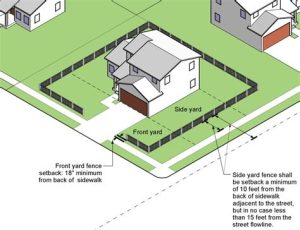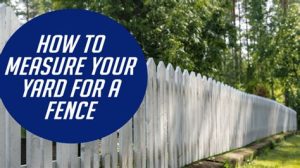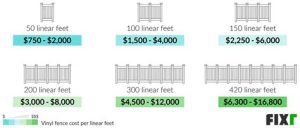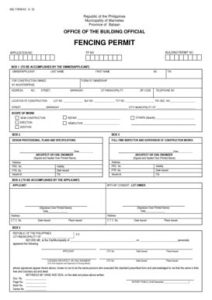Learn essential steps for property improvement: assess boundaries, research regulations, choose materials, obtain permits, and hire a professional contractor for successful projects.Installing a fence can enhance your property’s aesthetics, improve privacy, and add security, but it’s crucial to prepare properly before diving into this home improvement project. Taking the right steps beforehand can save you time, money, and potential legal hassles down the road. This blog post will guide you through the essential preparations needed prior to installing a fence, covering key aspects such as assessing property boundaries, researching local regulations, and choosing the right materials that suit your needs. We’ll also discuss the importance of obtaining necessary permits and offer tips on hiring a professional contractor to ensure a smooth installation process. Whether you’re aiming for a decorative touch or robust protection, these foundational steps will help set you on the right path to a successful fence installation.
Assessing Property Boundaries
Before installing a fence, one of the most critical steps is assessing your property boundaries. Understanding where your land begins and ends can prevent potential disputes with neighbors and legal issues down the line. Start by reviewing your property deeds, which typically include a diagram of the boundaries.
Next, consider using a land surveyor to mark your boundaries professionally. A surveyor can accurately determine the corners of your property and provide a detailed report. This process is particularly important in areas where property lines are unclear, as it can save you time and headaches later.
Additionally, check local laws regarding fence regulations. Some areas have specific rules about the placement of fences in relation to property lines. Consulting local regulations helps ensure you comply with these guidelines, properly marking your boundaries without encroaching on your neighbor’s land.
Researching Local Regulations
Before embarking on your fencing project, researching local regulations is essential to ensure compliance with your area’s laws and guidelines. Different municipalities have specific codes that dictate everything from fence height, style, and even materials. Understanding these regulations can save you time, money, and potential legal trouble down the line.
- Height Restrictions: Many areas have maximum height limits for residential fences. Make sure to check your local zoning laws.
- Permit Requirements: Some jurisdictions may require a permit before you can start your project. Ensure you know what documentation is needed.
- Easements and Property Lines: It’s crucial to determine if your fence will encroach on any easements or property lines to avoid disputes with neighbors.
Additionally, you can often find relevant information on your city or county’s official website. Many local governments provide resources and guides to help homeowners understand the specific regulations regarding fences. If further clarification is needed, reaching out to your local planning department can provide valuable assistance.
Choosing the Right Materials
Choosing the right materials for your fence is crucial, not only for aesthetic appeal but also for durability, maintenance, and cost-effectiveness. When selecting materials, consider factors such as climate, purpose, and local regulations. Each material has its advantages and disadvantages, and understanding them will help you make an informed decision.
| Material | Advantages | Disadvantages |
|---|---|---|
| Wood | Natural look, customizable, relatively affordable | Requires maintenance, susceptible to rot and insects |
| Vinyl | Low maintenance, durable, available in various colors | Higher initial cost, can fade or crack over time |
| Chain Link | Cost-effective, durable, easy to install | Less privacy, not as visually appealing |
| Aluminum | Rust-resistant, low maintenance, lightweight | Expensive, not as sturdy as other materials |
Always keep in mind the environment and safety regulations in your area. If you’re unsure about what materials to choose, consulting with a local professional can provide valuable insights tailored to your specific needs.
Obtaining Necessary Permits
When it comes to installing a fence, one of the key steps that often gets overlooked is obtaining necessary permits. Depending on where you live, there may be specific local regulations regarding fencing, which can include height restrictions, material specifications, and placement requirements. It’s essential to check with your city or county’s building department to avoid any potential fines or the need to remove your newly installed fence.
Before you file for a permit, it can be helpful to compile the specific details of your planned fence installation. Create a clear outline that includes the dimensions, style, and intended location of the fence. Some locations may also require you to provide a site plan that shows the property boundaries. This documentation will streamline the permitting process and help ensure that you receive the correct approvals.
To start the permitting process, visit your local government website or office to download the necessary forms. Many jurisdictions now offer online application systems that simplify the process. Make sure to submit all required documents and any applicable fees. Remember, even if the permit appears to be time-consuming, it’s a vital step to ensure your project remains compliant with local laws and protects your property rights.
Hiring a Professional Contractor
When it comes to installing a fence, hiring a professional contractor can make a world of difference. A skilled contractor not only possesses the requisite knowledge and experience, but they also have the ability to navigate potential challenges that may arise during the installation process. By investing in a professional, you ensure that the job is done efficiently and effectively.
- Expertise: Professional contractors have specialized training and can provide invaluable insights into the best practices for fence installation.
- Access to Resources: They typically have connections with suppliers, giving you access to high-quality materials at competitive prices.
- Time-Saving: A professional can complete the installation much faster than the average homeowner, allowing you to enjoy your new fence sooner.
Before making your final decision, it’s important to conduct interviews and obtain multiple quotes from different contractors. This will not only help you find the best price, but also allow you to gauge their communication skills and expertise. Look for reviews or references to ensure they have a track record of satisfied customers.
Ultimately, hiring a professional contractor can provide you with peace of mind, knowing that your fence will be built to last and meet all required regulations and standards. Make sure to weigh your options carefully and choose the right professional for your project.
Frequently Asked Questions
What are the first steps to take before installing a fence?
The first steps include determining your property boundaries, checking local zoning laws, and researching the type of fence that best suits your needs.
Why is it important to check local regulations before installing a fence?
It’s important to check local regulations to ensure that your fence complies with zoning laws, height restrictions, and any permits required, helping you avoid fines or required removals.
How can I determine the boundaries of my property?
You can determine property boundaries by referencing your property deed, consulting with a surveyor, or using a property mapping service.
What types of fences are available for residential use?
There are various types of residential fences available, including wood, vinyl, chain-link, aluminum, and composite, each offering different aesthetics and levels of maintenance.
What factors should I consider when choosing the type of fence?
Factors to consider include the purpose of the fence (privacy, security, decoration), budget, maintenance requirements, and how the chosen material fits within your home’s design.
Do I need to notify my neighbors before installing a fence?
Yes, it is courteous and sometimes legally required to notify your neighbors about your plans to install a fence, especially if it will affect their view or property.
What tools and materials do I need for fence installation?
Basic tools required for fence installation typically include a post hole digger, level, hammer, and measuring tape, along with materials such as fence panels, posts, and concrete.





